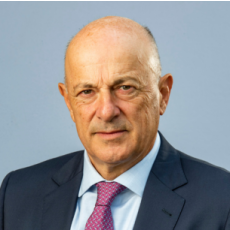Atalaya Mining is a European-based mining company focused on the production and development of copper projects in Spain.
You have a long and diverse experience beyond Spain, including work in Africa. With all that hindsight, which day would you say was the best in your career so far?
After 45 years in the industry, it is difficult to pinpoint a single day. Different periods of my career have each had their unique situations. For half of my career, I worked with big companies, covering everything from underground mining to becoming a superintendent of operations. It was a challenging yet fulfilling time, almost like a period of training.
In the next stage, I spent 12 years with a junior company, building several mines. We were taken over, and now, for the past 10 years, I have worked with a junior company that has grown into a producer. Working in Africa was particularly interesting, as it presented significant challenges, working with private companies and joint ventures on world-class projects in a tough environment. The early days with the junior company, where we built several mines, were also tough. But the past decade at Atalaya has been particularly rewarding due to overcoming challenges—perhaps the most satisfying period of my career.
Copper prices have surged to an all-time high this year despite problems in the Chinese economy. What do you think is behind this?
I have seen this before, with nickel and copper in the early 2000s. Back then, it was demand-driven, largely due to China’s growth. Now, while China is not growing as fast, it is growing from a much larger base, which makes even 5% growth impactful. Despite their struggles, China remains focused on becoming the world’s factory, particularly with energy transition projects like wind and solar power.
Construction, a major consumer of copper, has slowed in China, but the shift to renewable energy and electrification is creating significant copper demand. This electrification push is happening globally, not just in China, as the world aims for cheaper, faster energy solutions like wind and solar over traditional power sources. This trend is driving copper demand, and I believe we will see even higher prices in the future.
We are not facing a copper shortage now, but there will be a deficit in the future, and prices will need to rise to restore equilibrium. Unlike oil, which can be ramped up quickly, mining takes time.
You currently have one mine in production, Riotinto. Could you tell us about the expansion plans for it?
We have an existing production line treating the low-grade Riotinto deposit, but with our efficiencies and installations, we have been able to profitably mine this lower-content copper. However, we also have higher-grade areas around the mine. By making some investments, we can increase metal production by about 20% from the same facilities, thanks to better ore quality.
In addition, we are planning an expansion at a brownfield site in the north of Spain. This project will require a new plant and installation, which is currently in the permitting stage. We believe that in three years, Atalaya will have doubled its copper production with these expansions.
What about your Touro project. When do you expect this mine to become operational?
If we receive the permits for the Touro project by late this year or early 2025, we expect full production by the end of 2026 or early 2027. We are optimistic about getting these permits because we have worked closely with the authorities and addressed all concerns. While there may be some opposition, we are confident this will be a world-class project.
Given the scale of these expansions, how do you intend to raise the necessary capital?
We sense excitement from our investors, who strongly believe in the company's growth. We have been disciplined in managing our finances, even providing returns to shareholders through dividends. Our shareholders are mostly long-term institutions, and while we have not raised money in the equity market since 2017, we have been able to finance projects creatively, with minimal capital.
Today, the difference is that we have a strong balance sheet with no debt and are generating cash. This gives us leverage potential through debt financing, using our existing and future assets as collateral. We are confident that we have most of the capital requirements covered for these expansions.
It seems more challenging to operate in Europe compared to other regions. Would you agree with that assessment?
Yes, I would agree. Europe, and Spain in particular, has complex permitting processes with many layers of regulations, making it difficult to develop new projects. Additionally, there is often opposition from local pressure groups, especially in regions where land is scarce, and operations are close to populated areas.
That said, in established mining regions, there is strong support for mining operations, even from residents living close to the mines. However, for new projects, the “not in my backyard” sentiment often prevails, which can slow down development, even in countries with a long mining history like Sweden, Finland, and Spain.
Where do you see Atalaya five years from now?
In five years, I expect Atalaya to more than double in size. We will continue to develop our internal growth projects and may explore acquisitions to accelerate growth. Our shareholders demand a certain company size, and we are aiming to meet that requirement by expanding beyond Spain.
Atalaya will remain focused on safe jurisdictions like Europe, where the rules of the game are stable, even if permitting is difficult. Unlike in some regions of Africa or South America, where governments can change regulations unpredictably, Europe offers the stability we need to grow the company responsibly.





